What Kinds of Expenses Are Considered Future Medical Expenses?
When negotiating a financial settlement for injuries incurred in an accident, future medical costs may arise, especially if the injuries are severe or life-altering. It’s vital that future costs be included in a settlement so that the victim may be assured of not having financial stressors going forward and can focus on recovery for both physical and emotional health.
Calculating those costs can be complicated, not to mention understanding the numerous types of services involved. That’s one of the reasons it’s crucial to work with an experienced personal injury attorney who understands the law, the complex field of medical services involved in future costs, and what’s at stake for the victim.
Among the many medical expenses that can be expected in the future after an accident:
- Medications
- Out-of-pocket medical expenses (doctor’s visit, surgery, medical tests, etc.)
- Hospital bills
- Rehabilitation and therapy
- Mental health expenses
- Medical equipment (wheelchairs, hospital beds, assistive devices, etc.)
- Transportation assistance
- Home health care
- Prosthetics
How Are Future Medical Costs Calculated in New York?
Just as there are numerous medical costs that may arise in the future, there are also several factors in how future medical costs may be calculated when negotiating a personal injury settlement.
- Availability and necessity of relevant treatments
- Expected effectiveness of those treatments
- Expected duration of those treatments (based on the type of injury and the victim’s age, overall health, and life expectancy)
- Expected cost of those treatments
- Potential alternatives to those treatments
What Is Needed to Prove that Future Medical Costs Will Be Necessary?
There are several things that can be useful in proving the validity of future medical cost claims. One reason it’s highly advisable to work with an experienced personal injury attorney is they may be able to help you identify future costs you hadn’t previously considered that are valid and should be added to your claims.
The best evidence will be evidence from medical records and medical experts. These can provide an overall picture of the extent of the injuries, the prognosis going forward, the likelihood of ongoing medical treatments and care, and what the costs involved are likely to be (factoring in inflation and rising costs).
Another area that may affect future costs is if a life care plan is needed. A life care plan is a document that may be drawn up by your attorney and medical professionals that details not just the medical treatments that may be needed in the future but other factors, including if living spaces need modification (for example, adding a ramp to a home’s exit or renovating a bathroom to be wheelchair accessible) or if there will be ongoing expenses related to transportation (if the victim can no longer drive and will need mobility services).
What Is New York’s Comparative Negligence Law, and How Might it Affect My Case?
When an accident occurs and causes injuries, it’s not uncommon for more than one person to be at fault. For example, a driver who was intoxicated hits a car and injures the driver, but that driver was running a red light. Every state has laws determining how liability for the accident is divided among the people involved in the accident. There are three primary types of comparative negligence laws.
- Contributory negligence. This states that if the injured party is even 1% at fault for the accident, they’re ineligible to file for damages. Few states use this.
- Modified comparative negligence. This states that if the injured party is found roughly half at fault (the exact percentage varies according to state), they’re ineligible to file for damages.
- Pure comparative negligence. This states that even if the victim is 99% at fault, they can still receive 1% of the damages awarded.
New York is a pure comparative negligence state. That means if the victim in the scenario described above is found 30% at fault and is awarded $20,000 in damages, they’d receive $14,000 instead–$20,000 minus 30%.
This means that the party to which claims were filed will be motivated to assign as much fault to the victim as possible in order to pay as little in damages as possible. That’s yet another reason it’s valuable to work with an experienced personal injury attorney who understands their tactics and can work to protect your claim.
It’s also why it’s vital that the victim does not engage in any communication with the attorney or insurance representative working with the other party in the accident. They may try to get the victim to say something that could be construed as accepting blame for the accident. They may also try to coerce the victim into signing a settlement that’s far less than the victim might otherwise receive. Don’t accept communication requests; just forward them to your attorney.
What Should I Do if I Need Help Filing Claims for Future Medical Costs?
Call the Law Offices of Elke E. Mirabella, PC, as soon as possible at 631-721-4662 to schedule a free consultation. Being injured in an accident with long-term ramifications can be traumatic and overwhelming. Our team of experienced, knowledgeable personal injury attorneys understands how difficult this is for you. We also understand the nuances of the complex world of personal injury law. We can review the specifics of your case and help determine which approach may lead to the best outcomes.





